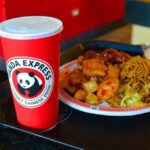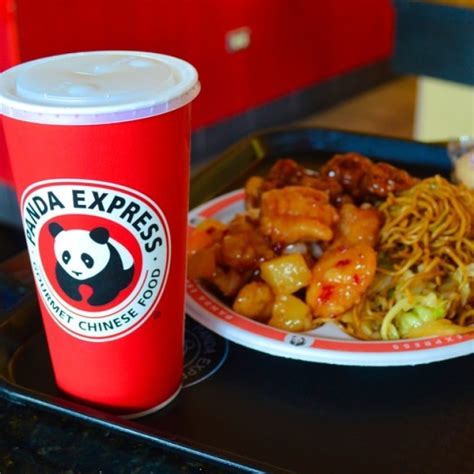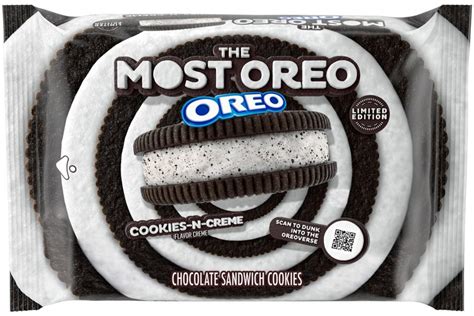
Panda Express, the ubiquitous American fast-food chain, faces ongoing scrutiny regarding its authenticity as a representation of Chinese cuisine, sparking debate about cultural representation and the palatability of its modified dishes for a diverse American audience. Critics argue that the chain’s menu offerings, heavily adapted to suit American tastes, stray significantly from traditional Chinese flavors and cooking techniques, raising questions about its legitimacy as genuine Chinese food.
Panda Express, founded in 1983 by Andrew and Peggy Cherng, has become a fast-food behemoth, boasting over 2,400 locations primarily in the United States, and generating billions in annual revenue. Its success lies in its ability to offer convenient, affordable, and palatable food options that appeal to a broad consumer base. However, this widespread appeal has come at the cost of culinary authenticity, as the chain has consistently tailored its dishes to cater to American preferences for sweetness, fried textures, and simplified flavor profiles.
The core issue lies in the disparity between traditional Chinese cuisine and the Americanized versions offered by Panda Express. Authentic Chinese food emphasizes fresh ingredients, balanced flavors (incorporating sweet, sour, salty, bitter, and umami), and diverse cooking methods such as stir-frying, steaming, and braising. In contrast, Panda Express often relies on pre-made sauces, deep-frying, and a limited range of ingredients, resulting in a menu that prioritizes convenience and mass appeal over culinary integrity.
The debate surrounding Panda Express reflects broader discussions about cultural appropriation in the food industry. Critics argue that the chain profits from a cuisine it does not accurately represent, potentially perpetuating stereotypes and misrepresenting the richness and complexity of Chinese culinary traditions. However, supporters argue that Panda Express provides an accessible entry point to Chinese-inspired flavors for Americans who may not be familiar with authentic Chinese food. They also point out that culinary adaptation is a natural process, and that Panda Express has created a unique category of American-Chinese cuisine that should be judged on its own terms.
One of the most frequently criticized dishes is Orange Chicken, Panda Express’s signature item. While the dish draws inspiration from traditional Chinese orange-flavored chicken dishes, it is significantly sweeter and more heavily battered than its authentic counterparts. According to the Yahoo Lifestyle article, “Orange Chicken, perhaps the chain’s most famous dish, isn’t something you’d find in China.” This statement encapsulates the core argument against Panda Express: its dishes are not representative of traditional Chinese cuisine.
The article also highlights the experiences of Chinese Americans who have mixed feelings about Panda Express. For some, the chain serves as a nostalgic reminder of childhood experiences, while for others, it represents a diluted and inauthentic version of their cultural heritage. This internal conflict reflects the complex relationship between cultural identity, food, and representation in a multicultural society.
Furthermore, the article points out the challenge of defining “authentic” Chinese food, given the vast regional variations and historical influences within Chinese cuisine itself. What is considered authentic in one region of China may be completely foreign in another. Therefore, the debate about Panda Express’s authenticity is inherently complex and nuanced.
Despite the criticisms, Panda Express has made some efforts to incorporate more authentic flavors and ingredients into its menu. The chain has introduced dishes inspired by regional Chinese cuisines and has experimented with incorporating more traditional cooking techniques. However, these efforts have been met with mixed results, as some customers find the more authentic dishes to be less palatable than the chain’s standard offerings.
Ultimately, the question of whether Panda Express constitutes “Chinese food” is a matter of perspective. From a culinary purist’s standpoint, the chain’s dishes are undoubtedly heavily Americanized and lack the depth and complexity of authentic Chinese cuisine. However, from a consumer’s perspective, Panda Express offers a convenient and affordable way to experience Chinese-inspired flavors, even if those flavors have been adapted to suit American tastes.
The debate surrounding Panda Express serves as a reminder of the importance of cultural sensitivity and accurate representation in the food industry. While culinary adaptation is inevitable, it is crucial to acknowledge the origins and complexities of the cuisines being adapted and to avoid perpetuating stereotypes or misrepresenting cultural traditions. As Panda Express continues to evolve and expand, it faces the challenge of balancing its commitment to mass appeal with the need to respect and accurately represent the diverse and rich culinary heritage of China.
The Menu and Its Adaptations
Examining specific menu items reveals the extent of adaptation at Panda Express. Beyond Orange Chicken, consider Kung Pao Chicken. A traditional Kung Pao Chicken dish involves stir-fried chicken, peanuts, vegetables, and chili peppers, often with a numbing Sichuan peppercorn element. Panda Express’s version typically simplifies the sauce, reducing the complexity of flavors and often omitting the Sichuan peppercorns entirely. The use of readily available and less expensive ingredients further distinguishes it from authentic preparations.
Similarly, the chain’s chow mein and fried rice, while resembling Chinese staples, often utilize different types of noodles and rice varieties than those traditionally used in China. The flavor profiles are often sweeter and less nuanced, catering to the American palate’s preference for sugary tastes. The emphasis is on speed and consistency, which can lead to a homogenization of flavors across different dishes.
Furthermore, the preparation methods employed by Panda Express differ significantly from traditional Chinese cooking techniques. Authentic Chinese cooking often involves high heat, quick stir-frying to preserve the freshness and texture of ingredients, and a mastery of “wok hei” – the smoky, slightly charred flavor imparted by a well-seasoned wok. Panda Express, on the other hand, relies more on pre-cooked ingredients, standardized recipes, and large-scale cooking equipment, which can compromise the quality and flavor of the final product.
The Role of Cultural Context
Understanding the cultural context of Chinese cuisine is crucial to evaluating Panda Express’s authenticity. Chinese food is not a monolithic entity but a diverse collection of regional cuisines, each with its unique ingredients, flavors, and cooking styles. Sichuan cuisine, for example, is known for its bold, spicy flavors, while Cantonese cuisine emphasizes fresh seafood and delicate sauces. Hunan cuisine features sour and spicy flavors, while Jiangsu cuisine is known for its refined knife skills and elaborate presentations.
Panda Express, however, does not attempt to represent the diversity of Chinese regional cuisines. Instead, it offers a simplified and homogenized version of Chinese-inspired dishes that are designed to appeal to a broad American audience. This simplification necessarily involves compromises in terms of authenticity and cultural representation.
The Impact of Globalization
The globalization of food has led to the widespread adaptation of cuisines around the world. As foreign cuisines are introduced to new markets, they are often modified to suit local tastes and preferences. This process can result in the creation of new and hybrid culinary traditions, but it can also lead to the dilution and misrepresentation of original cuisines.
Panda Express is a product of this globalization process. It represents a unique form of American-Chinese cuisine that has evolved to meet the demands of the American fast-food market. While it may not be authentic in the traditional sense, it has become a cultural phenomenon in its own right, shaping Americans’ perceptions of Chinese food.
The Future of Panda Express
Looking ahead, Panda Express faces the challenge of balancing its commitment to mass appeal with the growing demand for more authentic and diverse culinary experiences. The chain could potentially enhance its authenticity by incorporating more regional Chinese dishes into its menu, using higher-quality ingredients, and adopting more traditional cooking techniques. However, these changes could also increase costs and potentially alienate some of its existing customers.
Another approach would be to focus on educating consumers about the differences between American-Chinese cuisine and authentic Chinese food. Panda Express could use its platform to promote a greater understanding and appreciation of Chinese culinary traditions.
Ultimately, the future of Panda Express will depend on its ability to adapt to changing consumer preferences and to navigate the complex issues of cultural representation and authenticity in the food industry. Whether it continues down the path of further Americanization or embraces a more authentic culinary approach remains to be seen.
The Perspective of Chinese Americans
The article also touches on the nuanced feelings of Chinese Americans toward Panda Express. For many, the chain’s offerings are a far cry from the dishes they grew up eating at home or in authentic Chinese restaurants. This can lead to a sense of disappointment or even frustration, as Panda Express’s popularity can perpetuate a distorted view of Chinese cuisine.
However, some Chinese Americans also have positive associations with Panda Express. For those who grew up in areas with limited access to authentic Chinese food, Panda Express may have been their first exposure to Chinese-inspired flavors. The chain can also evoke feelings of nostalgia and comfort, reminding them of childhood memories or shared experiences with family and friends.
The complex and often contradictory feelings of Chinese Americans toward Panda Express highlight the challenges of navigating cultural identity and representation in a multicultural society.
The Broader Food Landscape
Panda Express operates within a broader landscape of American-Chinese restaurants, ranging from small, family-owned establishments to large, national chains. The level of authenticity varies widely across these restaurants, with some striving to maintain traditional flavors and cooking techniques while others prioritize affordability and mass appeal.
The success of Panda Express has undoubtedly influenced the American perception of Chinese food, shaping expectations and preferences. However, it is important to recognize that Panda Express represents only one facet of the diverse and multifaceted world of Chinese cuisine.
The Ethical Considerations
The debate surrounding Panda Express also raises ethical considerations related to cultural appropriation and the responsibility of food businesses to accurately represent the cuisines they offer. While culinary adaptation is a natural and often beneficial process, it is important to avoid perpetuating stereotypes or misrepresenting cultural traditions.
Food businesses have a responsibility to educate consumers about the origins and complexities of the cuisines they serve and to avoid making false or misleading claims about authenticity. They should also be mindful of the potential impact of their actions on cultural communities and strive to promote understanding and appreciation of diverse culinary traditions.
Conclusion
The question of whether Panda Express constitutes “Chinese food” is a complex one with no easy answer. While the chain’s dishes are undoubtedly heavily Americanized and lack the depth and complexity of authentic Chinese cuisine, they have become a cultural phenomenon in their own right, shaping Americans’ perceptions of Chinese food.
The debate surrounding Panda Express serves as a reminder of the importance of cultural sensitivity and accurate representation in the food industry. As Panda Express continues to evolve and expand, it faces the challenge of balancing its commitment to mass appeal with the need to respect and accurately represent the diverse and rich culinary heritage of China. The chain’s future likely hinges on its ability to navigate these complex issues and to adapt to changing consumer preferences in an increasingly globalized and culturally aware world. The key takeaway is that while Panda Express provides a readily accessible and affordable experience of ‘Chinese-inspired’ cuisine, it diverges significantly from authentic Chinese culinary traditions. The extent to which this matters is a matter of individual opinion and palate.
Frequently Asked Questions (FAQ)
Q1: Is Panda Express considered authentic Chinese food?
A: No, Panda Express is generally not considered authentic Chinese food. While it draws inspiration from Chinese cuisine, its dishes are heavily adapted to suit American tastes, often prioritizing sweetness, fried textures, and simplified flavor profiles over traditional Chinese cooking techniques and ingredients. As the article states, “Orange Chicken, perhaps the chain’s most famous dish, isn’t something you’d find in China.”
Q2: What are the main criticisms of Panda Express regarding its representation of Chinese cuisine?
A: The main criticisms include the use of pre-made sauces, deep-frying instead of stir-frying or steaming, a limited range of ingredients compared to the diversity of Chinese cuisine, and a general simplification of flavors to cater to American preferences. Critics argue that this adaptation misrepresents the richness and complexity of authentic Chinese culinary traditions.
Q3: Has Panda Express made any efforts to improve the authenticity of its menu?
A: Yes, Panda Express has made some efforts to incorporate more authentic flavors and ingredients, such as introducing dishes inspired by regional Chinese cuisines. However, these efforts have been met with mixed results, as some customers find the more authentic dishes less palatable than the chain’s standard offerings.
Q4: How do Chinese Americans feel about Panda Express?
A: Chinese Americans have mixed feelings about Panda Express. Some view it as a nostalgic reminder of childhood experiences, while others consider it a diluted and inauthentic representation of their cultural heritage. This reflects the complex relationship between cultural identity, food, and representation in a multicultural society.
Q5: What is the significance of the debate surrounding Panda Express?
A: The debate highlights the importance of cultural sensitivity and accurate representation in the food industry. It raises questions about cultural appropriation, the responsibility of food businesses to accurately represent the cuisines they offer, and the impact of globalization on culinary traditions. It underscores the challenge of balancing mass appeal with the need to respect and accurately portray the diverse and rich culinary heritage of China.


![Oreo’s [Flavor Name] So Good, Petition to Make It Permanent!](https://duniateknoku.com/wp-content/uploads/2025/06/unnamed-file-876-150x150.jpg)


![Oreo’s [Flavor] So Good, Fans May Demand Permanent Status!](https://duniateknoku.com/wp-content/uploads/2025/06/unnamed-file-873-150x150.jpg)



